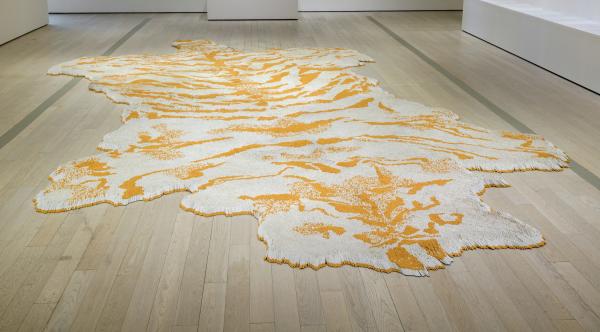The Art Preparation & Installation department (API) is made up of a program administrator and 22 preparators, also known as art handlers, or preps. We have three teams, two of which primarily move, pack/unpack and install/deinstall artwork for exhibitions, and the third does the same work for permanent collection activities such as curatorial and scholarly viewings, conservation, photography, outgoing loans, and new acquisitions. Many of us are drawn to the field of art handling because we love solving problems. Since each artwork is unique, we are constantly faced with new problems to solve. An exhibition like The Allure of Matter: Material Art from China (on view through January 5, 2020), consisting of contemporary works made of unconventional materials using nontraditional techniques, provides lots of challenges for us to sink our teeth into.
Art handlers need to have a seemingly contradictory combination of skills. We must bring creative solutions to problems and also be organized. We move heavy things and also extremely delicate things. We must focus on complex tasks yet be highly flexible and adapt to last-minute changes.
Installing The Allure of Matter required all the skills mentioned above. We do our best to honor the vision of each artist when installing their work, which means gathering information including any notes, sketches, and installation instructions from the artist or their studio. Working with artists from another country who speak a different language adds an additional layer of complexity, and can make it hard to find the exact materials or tools requested. There is a lot of preparation that happens before we even enter the gallery to begin installation. This blog addresses how we installed five artworks in The Allure of Matter after we received them at LACMA. Many departments and people participated in the installation, which was led by Susie Ferrell, Wynn Resorts Assistant Curator of Chinese Art; Monique Abadilla, senior assistant registrar, exhibitions, Registration & Collections; and Matt Driggs, supervisor, API.
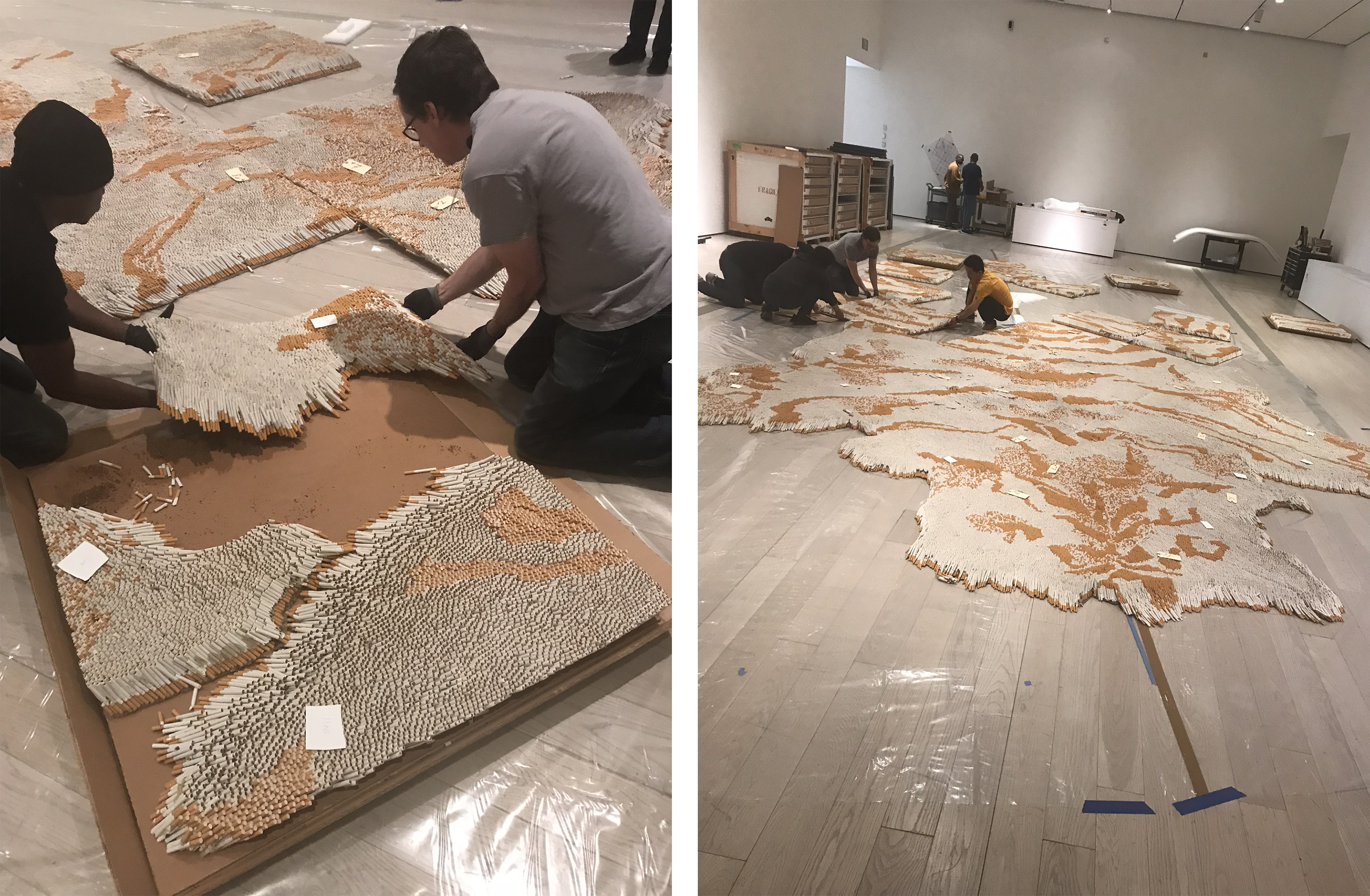
First Class by Xu Bing is a huge tiger skin rug made out of half a million cigarettes. We had 8–10 art handlers work for over seven days to install it. The work came in crates with trays containing sections of the rug, which were carefully laid out following a diagram once the placement in the gallery was agreed upon. The central spine was given height by putting padding under it.
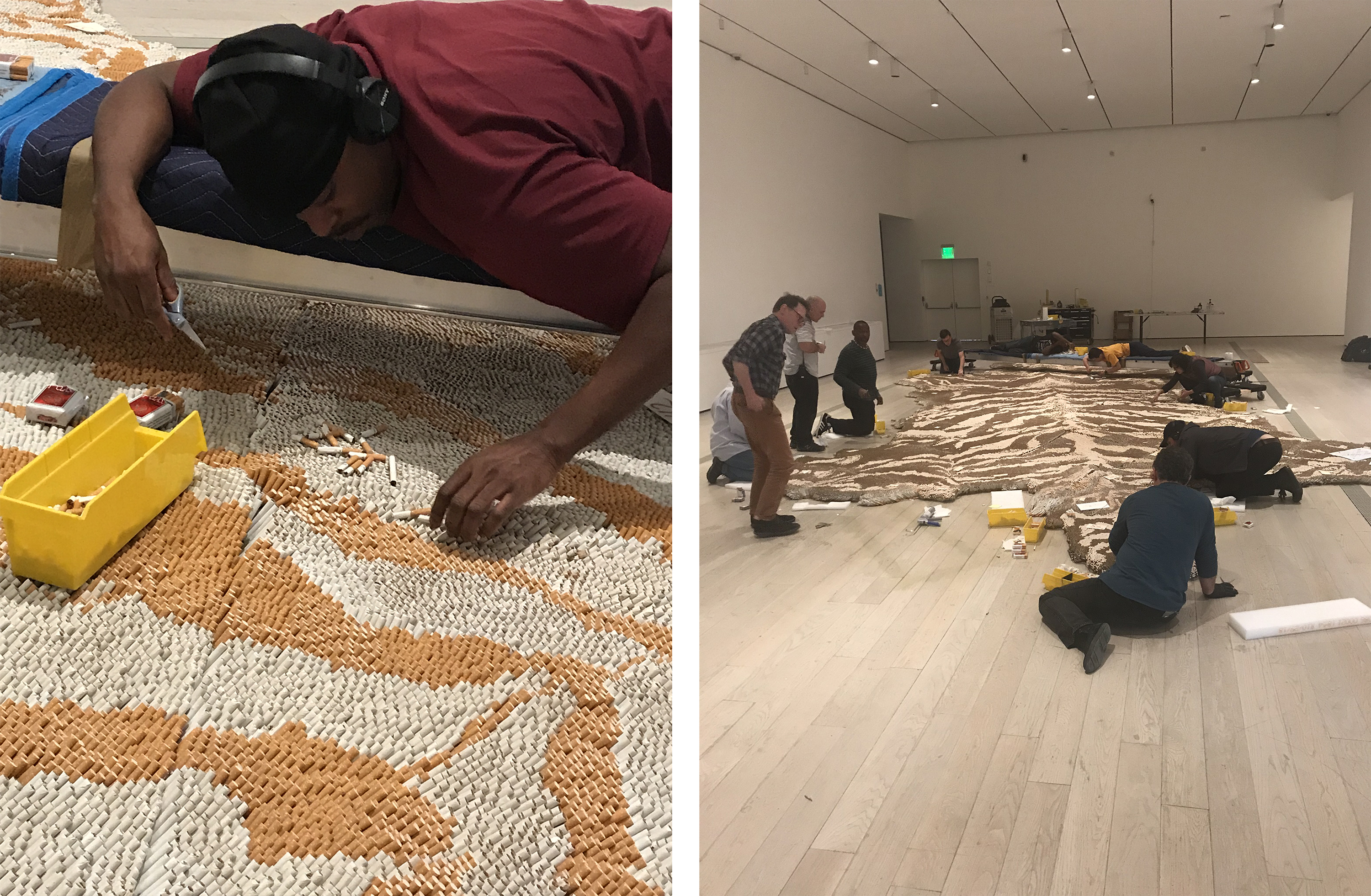
After the rug sections were arranged as tightly as possible, the team painstakingly filled the seams with thousands of cigarettes they had individually trimmed ahead of time or during the installation. These cigarettes were also treated ahead of time to match the color of the old cigarettes. Two art handlers at a time laid on a 20-foot-long bridge to work on areas in the middle of the rug. Loose cigarettes were also used to finish the entire perimeter of the carpet.
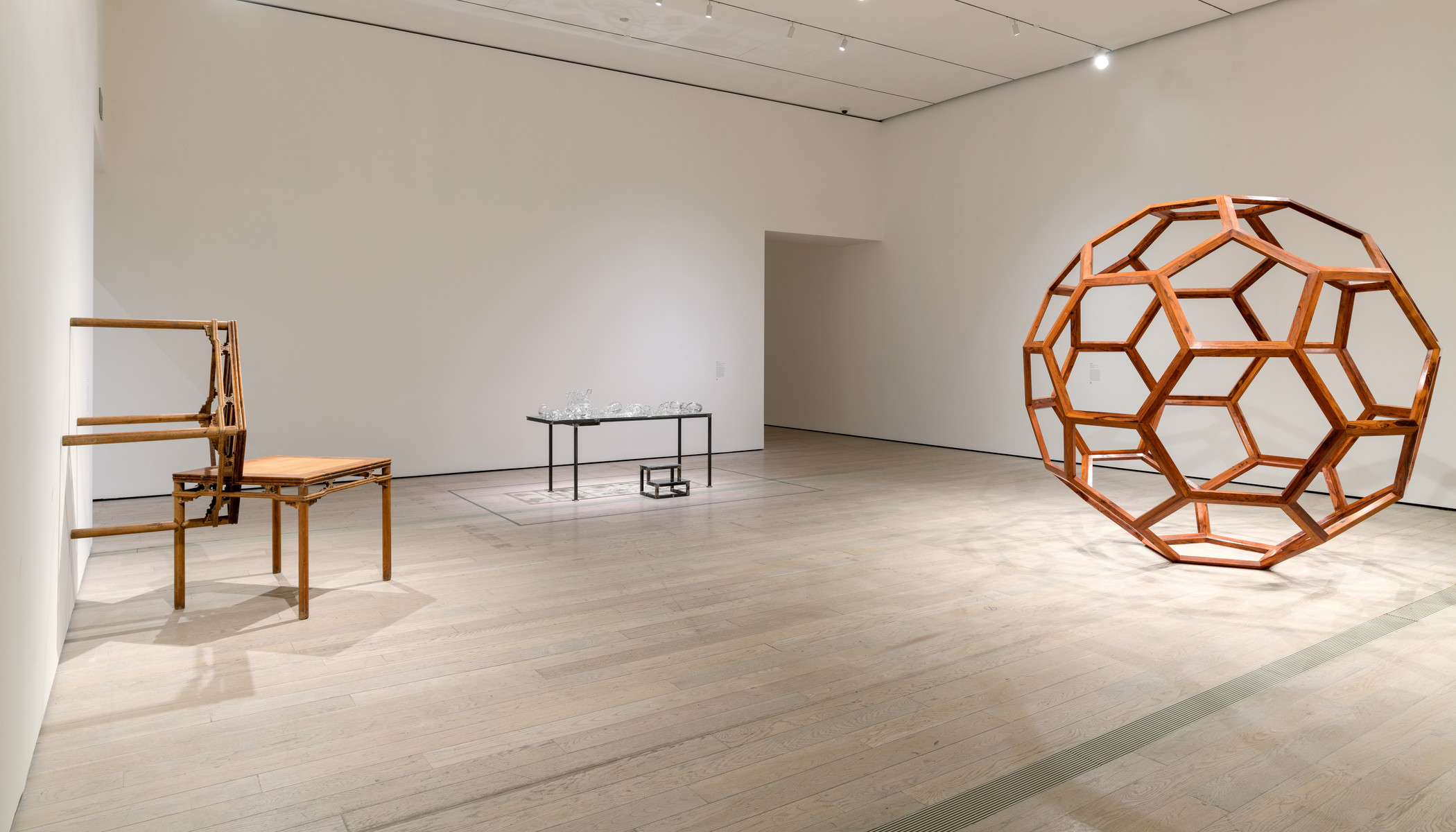
While Ai Weiwei’s, Untitled, Divina Proportione is a relatively simple piece to handle since it consists of a single object that can be easily lifted by a few people, it is so large that it doesn’t fit through the front doors of BCAM. We had to remove a series of exhibition banners for the crate to even travel down the concourse to the west side of the building.
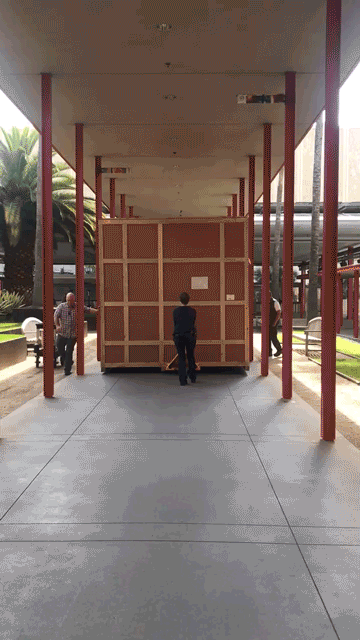
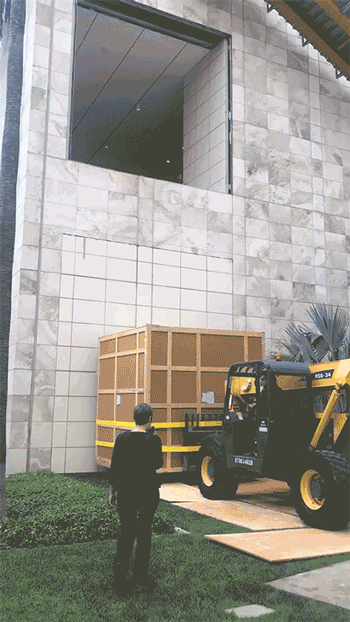
Preparators transporting Ai Weiwei's Untitled, Divina Proportione
There is a section of wall on the second floor of BCAM that opened up so the ten foot cubed crate could fit through it. We used a telehandler (a forklift that extends out in front as well as up) to lift this piece into the gallery. Before receiving the crate we prepared the ground in front of the art door with plywood and covered sprinkler lines and utility boxes with trench plates to protect them from the weight of the forklift.
.jpg)
Gold Mountain by Zhan Wang is a work consisting of two stones, one an actual boulder, weighing 6,600 pounds, and the other a replica boulder made from stainless steel sheet weighing just 40 pounds. They both needed to be lifted off of their shipping pallets and put onto platforms in the gallery. We used a gantry crane with two chain fall hoists to lift the heavier stone, while two preps could easily handle the stainless steel copy. Since our existing equipment couldn’t handle the weight and it was time for an upgrade, we had a gorgeous new aluminum gantry fabricated for the job.
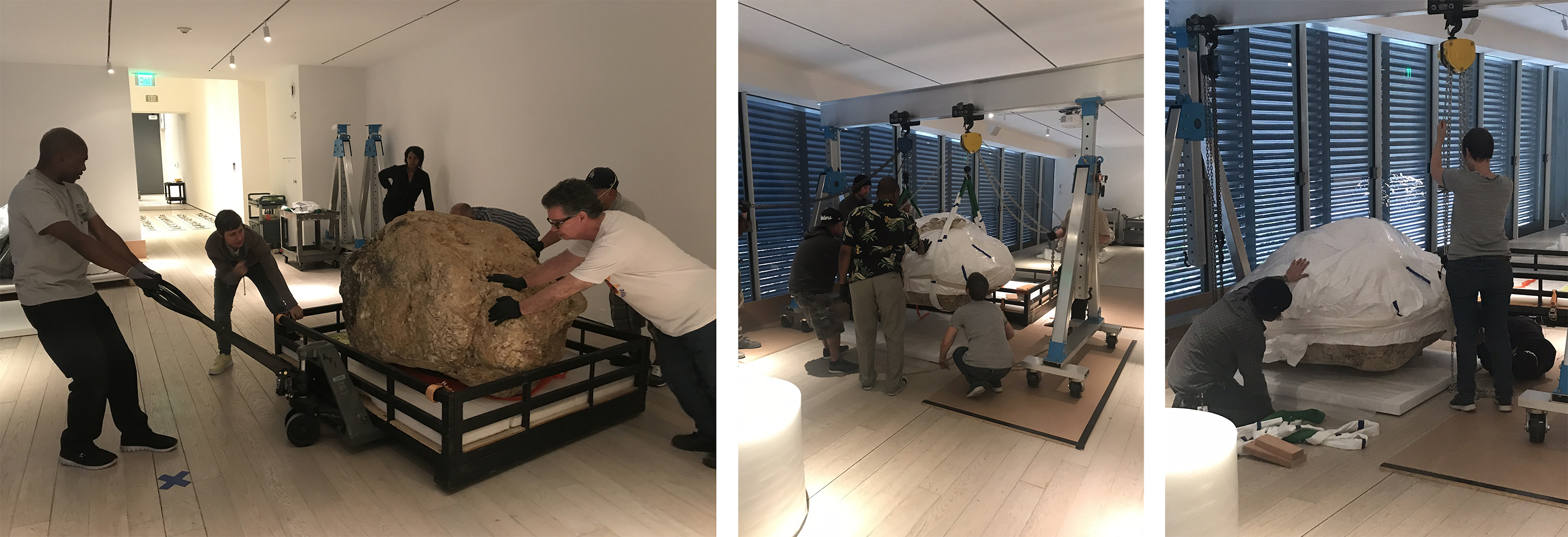
The location of the stones in the gallery posed obstacles we had to work around such as a floor vent that we covered with plywood and a low soffit in the ceiling that reduced the working space under the I-beam. We used a single choker hitch sling configuration to lift each end of the stone enough to get blocks under it and feed slings through to pick it up with two slings, each in a basket configuration. We then tied a belly strap around the stone to keep the load secure.
.jpg)
Lin Tianmiao’s Day-Dreamer is a bed connected by what appear to be thousands of threads to an image floating high above. It is actually a single strand made up of many threads tied end-to-end sewn up and down thousands of times. The top mattress is suspended from the ceiling by steel rods. The height is dictated by the length of the threads.
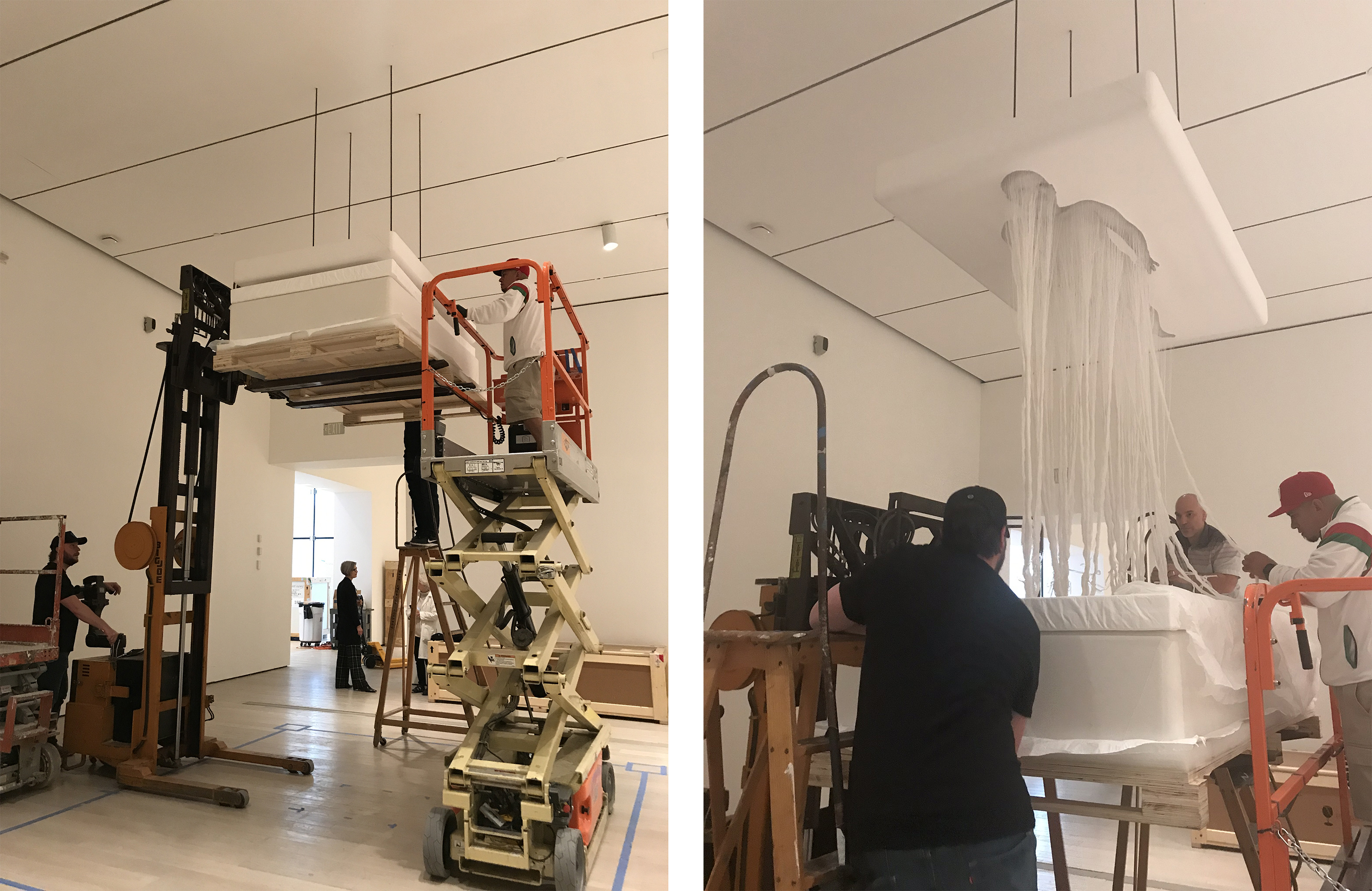
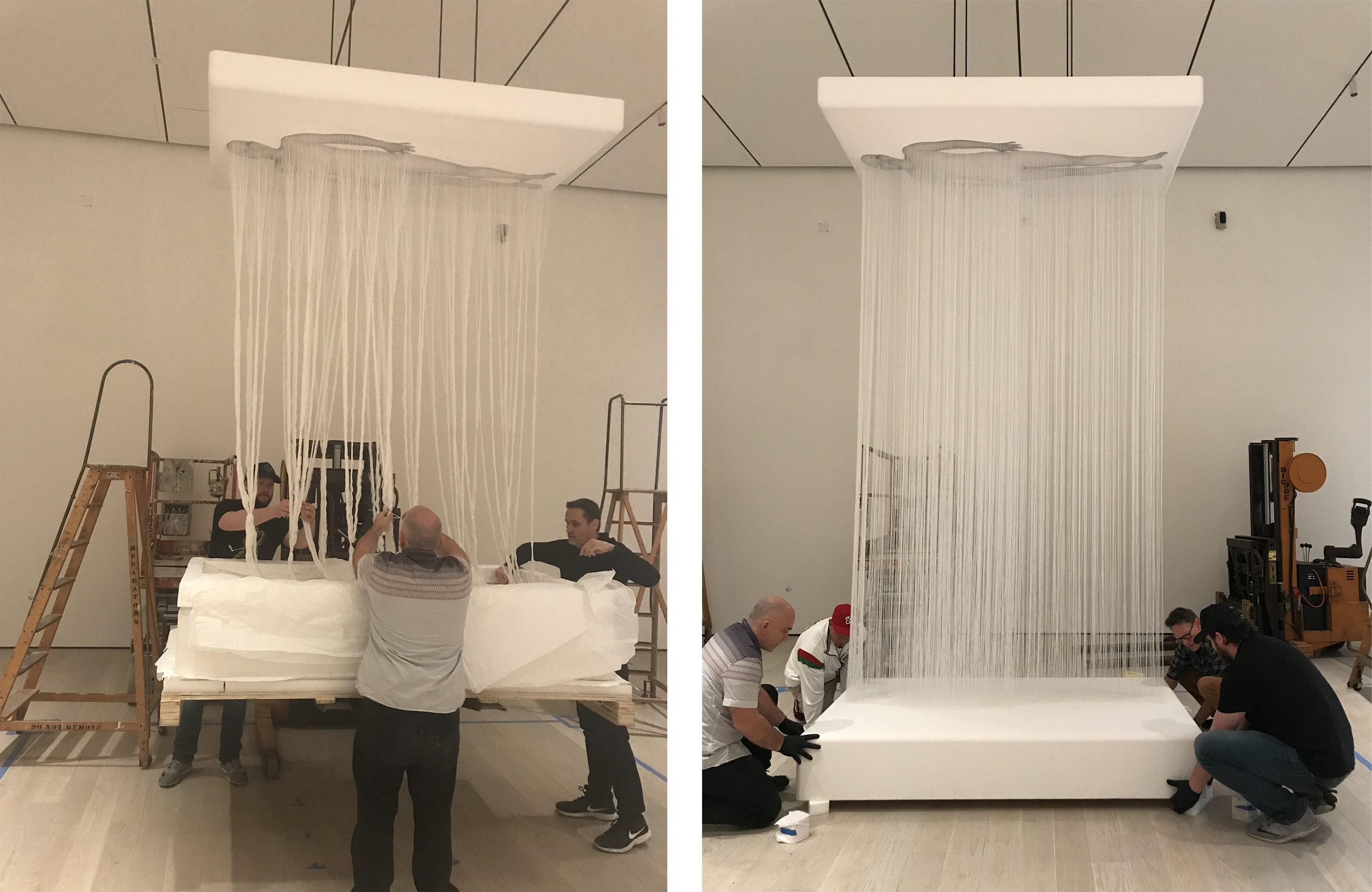
The preps first installed the steel rods into the ceiling, then lifted the entire piece with a forklift, attached the steel rods to the top mattress, and slowly lowered the bottom mattress into position, carefully untying the bundled threads and separating them as they went. It was essential to achieve just the right amount of tension in the threads between the two mattresses—enough to pull the fabric on the mattresses to create the desired form around the image of the artist’s body, but not enough to break the threads.
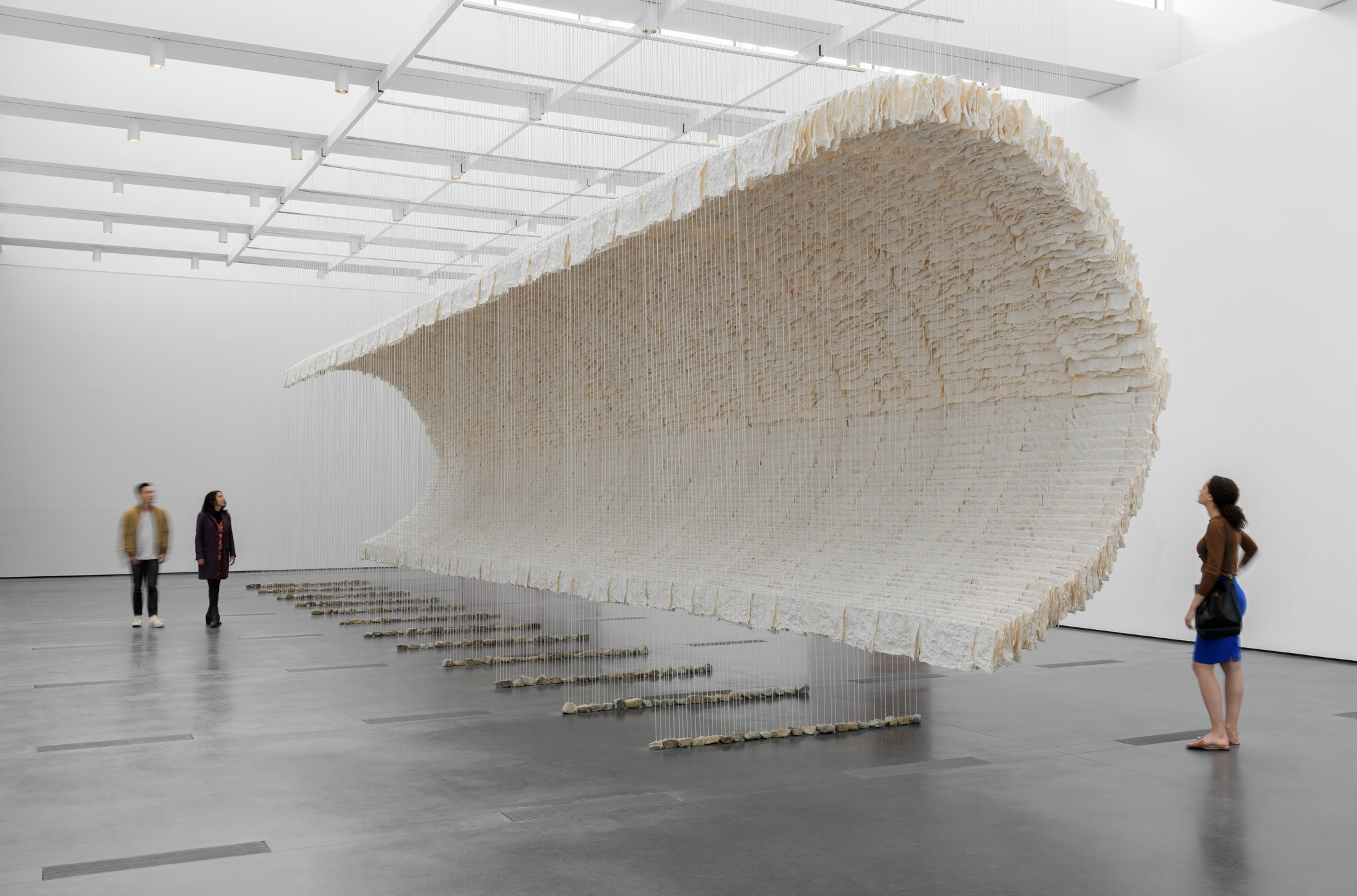
Zhu Jinshi’s monumental work Wave of Materials was part of The Allure of Matter but was installed in the Resnick Pavilion and deinstalled ahead of the rest of the exhibition, on September 15, 2019. Dave Foster, art preparator II, wrote about the experience of installing this work:
Zhu Jinshi’s 2007 work Wave of Materials arrived in six large crates, the smallest of which weighed just under 500 pounds. Installation photographs of the approximately 11 by 40 foot artwork barely hinted at the enormity of the task before us. And so, with three weeks to make it happen, the entire API team dove into one of the most labor-intensive installations any of us could remember.
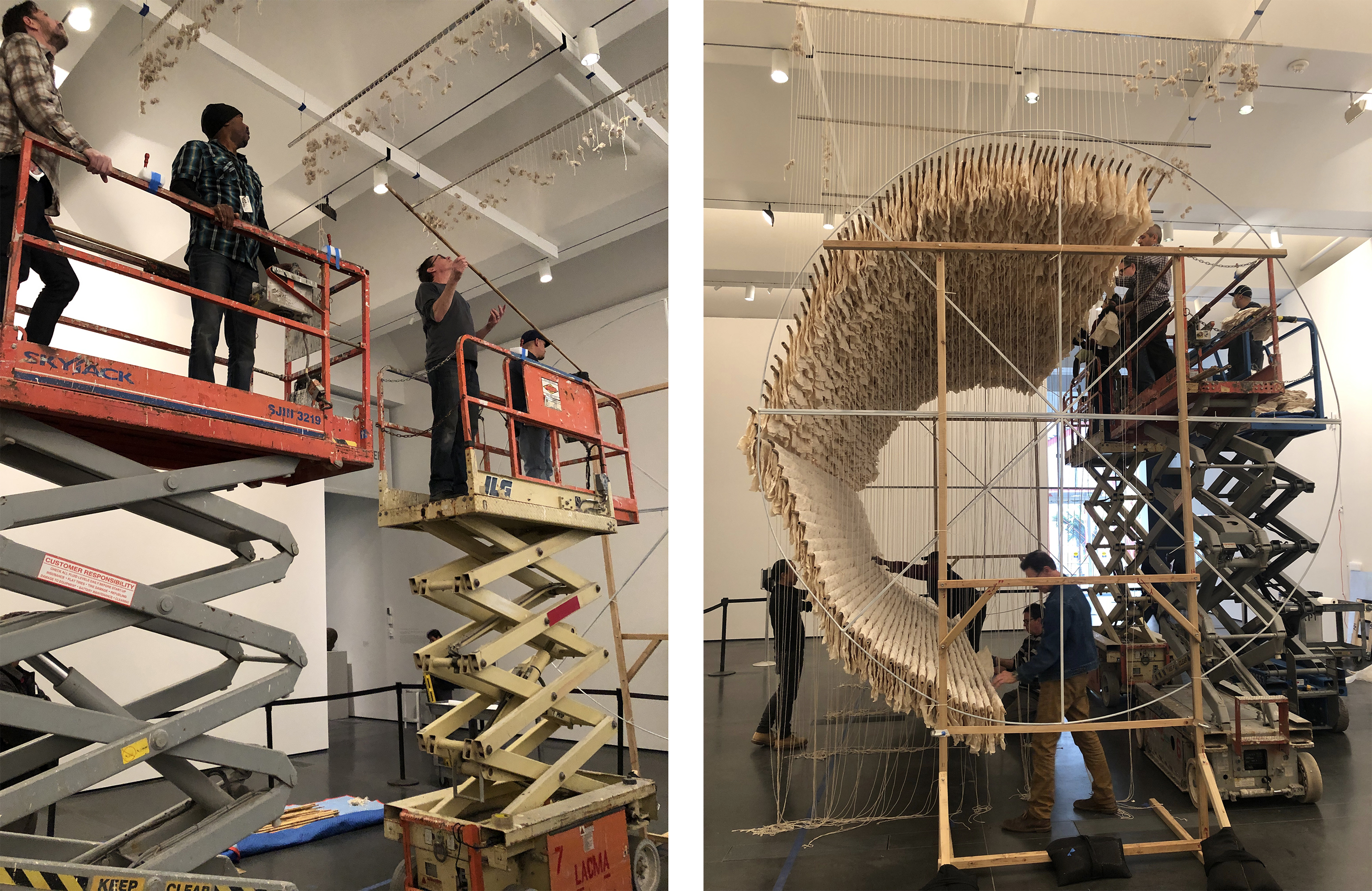
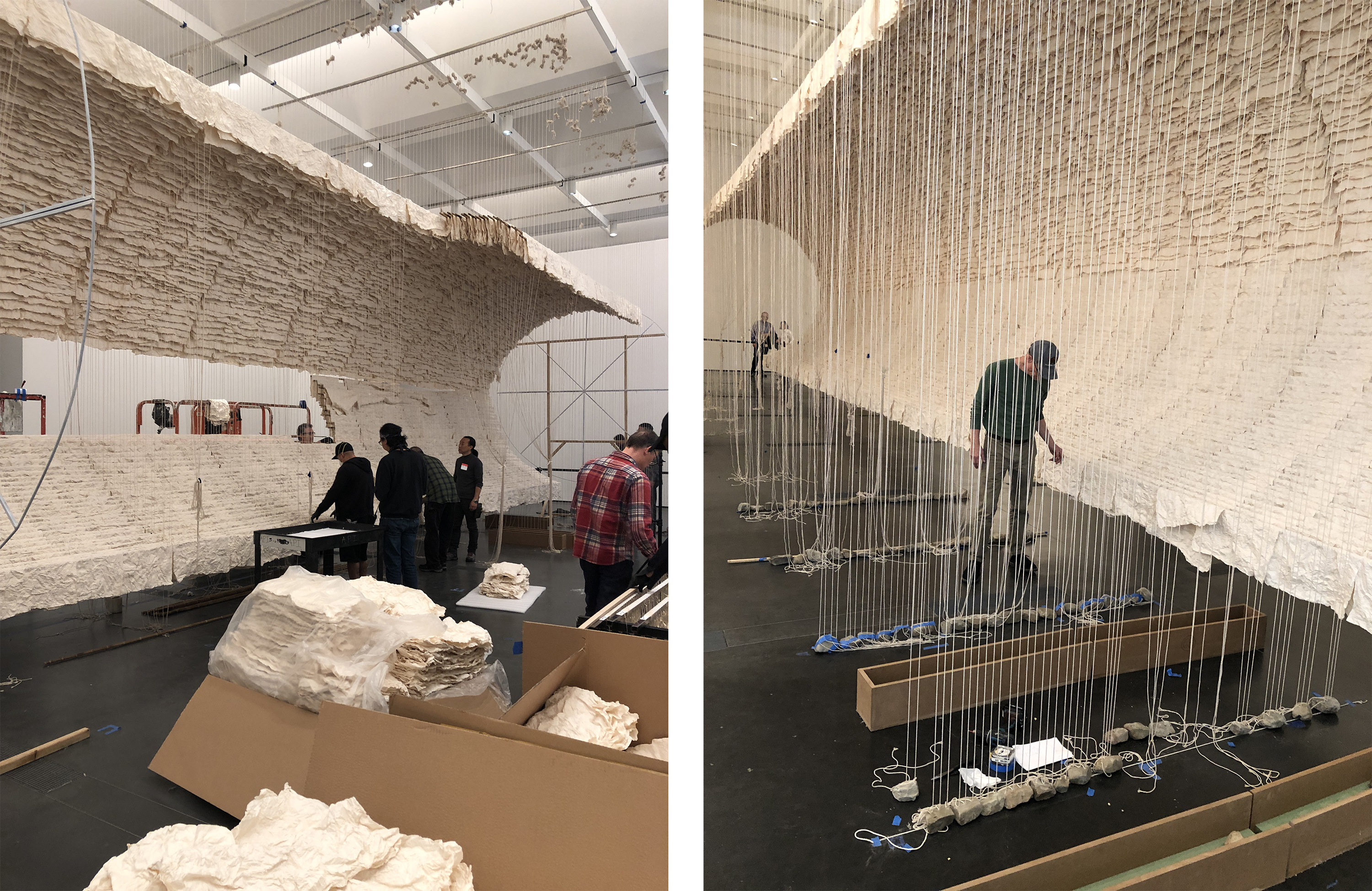
With much-appreciated assistance from the registrars and curatorial assistants, we began unpacking the thousands of elements that we would transform into an enormous cresting wave. Hundreds of bamboo rods were suspended by cotton twine from the ceiling joined end-to-end with tape, and made level by adjusting knots in the twine. That was the easy part. We then placed 8,000 or so carefully folded sheets of xuan paper over the bamboo and secured the entire piece to the floor by attaching specially selected stones to the twine. Apart from power drills to open crates and hydraulic lifts to raise us to the top of the wave, no modern tools were used; the work was completed almost entirely by hand, or more accurately, fingertips.
Although galleries are typically closed while we install an exhibition, this time we were in the center of the Resnick Pavilion, surrounded on four sides by a very inquisitive public. Judging from the questions we fielded as we worked, this was the first exposure to contemporary Chinese art for many museum visitors, with the added bonus of seeing the piece take shape before their eyes.
The Allure of Matter: Material Art from China is on view in BCAM through January 5, 2020.



